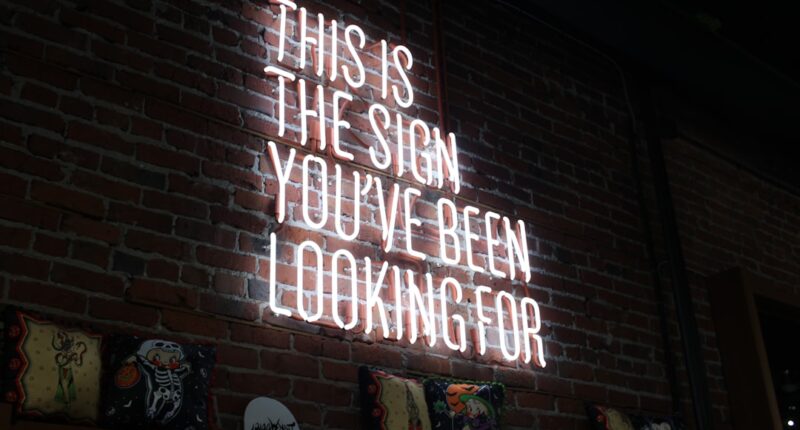Non-fungible tokens (NFTs) have taken the digital world by storm, but what exactly are they and how do they work? NFTs are unique digital assets that represent ownership or proof of authenticity of a specific item or piece of content, such as artwork, videos, music, or collectibles, using blockchain technology. Unlike cryptocurrencies like Bitcoin or Ethereum, which are fungible and can be exchanged on a one-to-one basis, NFTs are non-fungible, meaning each one is unique and cannot be exchanged on a like-for-like basis.
NFTs are created, bought, and sold on various blockchain platforms, with each NFT containing metadata that certifies its uniqueness and ownership. This metadata includes information about the creator, the asset itself, and a record of its transaction history. NFTs are typically bought and sold using cryptocurrency, and the ownership and transfer of NFTs are recorded on the blockchain, providing a transparent and immutable ledger of ownership. This technology has revolutionized the way digital assets are bought, sold, and owned, opening up new opportunities for creators and collectors in the digital space.
NFTs have gained popularity in the art world, with artists and creators leveraging this technology to tokenize their work and sell it as digital assets. The value of an NFT is determined by factors such as the rarity, demand, and perceived value of the underlying asset. NFTs have also sparked debates around copyright, intellectual property, and the environmental impact of blockchain technology. As the NFT market continues to evolve, it is important for creators and collectors to understand the underlying technology and potential implications of this new form of digital ownership.
Creating Your Own NFT: Step-by-Step Guide for Artists and Creators
For artists and creators looking to capitalize on the NFT craze, creating and selling your own NFT can be an exciting opportunity to monetize your digital work. Here’s a step-by-step guide to help you get started:
1. Choose Your Platform: There are several blockchain platforms that support the creation and sale of NFTs, such as Ethereum, Binance Smart Chain, and Flow. Research different platforms to find one that aligns with your needs and goals.
2. Create Your Digital Asset: Whether it’s a piece of artwork, a music track, a video clip, or any other digital content, ensure that your work is original and of high quality. Consider the story behind your creation and how it will resonate with potential buyers.
3. Mint Your NFT: Minting an NFT involves creating a unique token on the blockchain that represents your digital asset. This process typically involves uploading your file to a platform, adding metadata, and paying a gas fee (transaction fee) to complete the minting process.
4. Set Your Terms: When minting your NFT, you can set parameters such as royalties for future sales, unlockable content for buyers, and other terms that govern the ownership and transfer of your NFT.
5. List Your NFT for Sale: Once your NFT is minted, you can list it for sale on a marketplace or auction platform. Be sure to promote your NFT on social media and other channels to attract potential buyers.
Creating and selling NFTs requires careful consideration of the platform, the quality of your digital asset, and the terms you set for buyers. By following these steps, artists and creators can enter the world of NFTs and potentially generate income from their digital creations.
Selling Your NFT: Tips for a Successful Auction or Marketplace Listing
After creating your NFT, the next step is to sell it through an auction or marketplace listing. Here are some tips for a successful NFT sale:
1. Choose the Right Marketplace: Research different NFT marketplaces to find one that aligns with your target audience and the type of digital content you are selling. Consider factors such as fees, user interface, and community engagement.
2. Set an Appropriate Price: Pricing your NFT can be challenging, as it involves assessing the value of your digital asset and gauging market demand. Consider factors such as the uniqueness of your work, your reputation as an artist, and current market trends when setting a price for your NFT.
3. Tell Your Story: When listing your NFT for sale, be sure to include a compelling description that tells the story behind your creation. Potential buyers are often drawn to the narrative behind an artwork or digital asset, so use this opportunity to connect with your audience.
4. Promote Your NFT: Utilize social media, online communities, and other channels to promote your NFT listing. Engage with potential buyers, share behind-the-scenes content, and build anticipation for your sale.
5. Engage with Your Buyers: Once your NFT is listed for sale, engage with potential buyers by answering questions, providing additional context about your work, and fostering a sense of community around your digital creations.
Selling an NFT requires strategic planning, effective storytelling, and proactive promotion. By following these tips, artists and creators can increase their chances of a successful auction or marketplace listing for their NFTs.
NFT Jobs: Exploring Opportunities in the NFT Industry
“`html
| Job Title | Skills Required | Average Salary |
|---|---|---|
| NFT Developer | Blockchain development, smart contracts, NFT standards | 80,000 – 150,000 |
| NFT Marketing Specialist | Digital marketing, NFT promotion, community management | 60,000 – 100,000 |
| NFT Artist | Digital art creation, NFT platforms, copyright knowledge | 40,000 – 80,000 |
| NFT Legal Consultant | Blockchain law, NFT regulations, intellectual property rights | 90,000 – 150,000 |
“`
The rise of NFTs has created new job opportunities in the digital art space and blockchain industry. Here are some potential roles in the NFT industry:
1. NFT Artist: Artists who create digital content such as artwork, music, videos, or collectibles can capitalize on the NFT craze by tokenizing their work and selling it as digital assets.
2. Blockchain Developer: Professionals with expertise in blockchain technology can find opportunities in developing NFT platforms, smart contracts, and other technical aspects of the NFT ecosystem.
3. Marketing and Community Management: NFT marketplaces and platforms require marketing professionals to promote NFT listings, engage with artists and collectors, and build a vibrant community around digital art.
4. Legal and Compliance: As the NFT market matures, there is a growing need for legal experts who can navigate intellectual property rights, copyright laws, and regulatory compliance in the digital art space.
5. Curators and Collectors: Individuals with a passion for art curation and collecting can explore opportunities in curating NFT collections, managing digital art portfolios, and advising collectors on NFT investments.
6. Content Creation: Writers, videographers, and content creators can find opportunities in producing educational content, documentaries, and promotional material related to NFTs and digital art.
The NFT industry presents diverse career paths for individuals with skills in art creation, technology, marketing, law, curation, and content creation. As the market continues to evolve, new job opportunities are likely to emerge in this dynamic and fast-growing industry.
NFT Artists: Showcasing Success Stories and Best Practices
NFT artists have been making headlines with record-breaking sales and innovative approaches to digital art creation. Here are some success stories and best practices from NFT artists:
1. Beeple: Digital artist Mike Winkelmann, known as Beeple, made history with his $69 million sale of a digital collage as an NFT at Christie’s auction house. His success has brought attention to the potential for digital artists to monetize their work through NFTs.
2. Pak: The anonymous artist known as Pak has gained recognition for their mesmerizing digital art pieces sold as NFTs. Their innovative approach to creating generative art has captivated collectors and enthusiasts in the NFT space.
3. Trevor Jones: Artist Trevor Jones has leveraged NFTs to sell his vibrant digital paintings to a global audience. His success demonstrates how artists can reach new markets and engage with collectors through blockchain technology.
Best practices for NFT artists include creating high-quality original content that resonates with audiences, engaging with collectors through social media and online communities, collaborating with other artists and creators to expand their reach in the NFT space.
NFT News: Staying Updated on Trends, Regulations, and Market Insights

Staying informed about the latest trends, regulations, and market insights is crucial for anyone involved in the NFT space. Here are some key areas to stay updated on:
1. Market Trends: Keep an eye on market trends such as popular categories of NFTs (artwork, music, collectibles), emerging platforms for buying and selling NFTs, and shifts in buyer behavior within the NFT ecosystem.
2. Regulatory Developments: Stay informed about regulatory developments related to cryptocurrencies, blockchain technology, intellectual property rights, and tax implications of buying and selling NFTs.
3. Market Insights: Follow industry reports, market analysis, and expert opinions on the future of NFTs, potential challenges facing the industry, and opportunities for growth in the digital art space.
4. Community Engagement: Engage with online communities, forums, and social media channels dedicated to NFTs to stay connected with fellow artists, collectors, enthusiasts, and industry professionals.
By staying updated on news and developments in the NFT space, individuals can make informed decisions about creating, selling, collecting, or investing in digital assets through blockchain technology.
NFT Platforms: Comparing Different Marketplaces and Platforms for Selling NFTs
There are several marketplaces and platforms where artists can sell their NFTs to collectors around the world. Here’s a comparison of some popular NFT platforms:
1. OpenSea: OpenSea is one of the largest decentralized marketplaces for buying and selling NFTs across multiple blockchains such as Ethereum and Polygon. It offers a wide range of digital assets including artwork, domain names, virtual worlds items, and more.
2. Rarible: Rarible is an Ethereum-based platform that allows creators to mint and sell their own digital collectibles as NFTs. It also features a governance token (RARI) that enables community members to participate in platform decisions.
3. Foundation: Foundation is a curated marketplace for digital art where creators can mint limited edition artworks as NFTs. The platform focuses on supporting emerging artists and fostering a community-driven approach to buying and selling digital art.
4. SuperRare: SuperRare is a platform dedicated to showcasing rare digital art by leading artists in the space. It emphasizes curation and exclusivity by offering limited edition artworks as NFTs.
5. KnownOrigin: KnownOrigin is an Ethereum-based platform that focuses on promoting original artwork by emerging artists through blockchain technology. It aims to provide transparency in ownership rights while supporting creators in monetizing their work as NFTs.
When choosing an NFT platform to sell your digital assets, consider factors such as fees, user interface, community engagement, curation process, and target audience to maximize your success in the competitive world of digital art marketplaces.
By carefully evaluating these factors, you can ensure that you are selecting a platform that aligns with your goals and values as an artist. Additionally, understanding the target audience of each platform can help you tailor your marketing and promotional efforts to reach the right buyers. Community engagement and curation processes can also impact the visibility and perceived value of your NFTs, so it’s important to choose a platform that prioritizes these aspects. Ultimately, by taking the time to research and compare different NFT platforms, you can make an informed decision that sets you up for success in the digital art marketplace.
If you’re interested in learning more about how to make an NFT and sell it, you should check out this article on NFT-Jobs. This website offers valuable insights and resources for those looking to enter the world of NFT creation and sales. Whether you’re an artist, a collector, or simply curious about the NFT market, this article can provide you with the information you need to get started.
FAQs
What is an NFT?
An NFT, or non-fungible token, is a digital asset that represents ownership or proof of authenticity of a unique item or piece of content, such as artwork, music, videos, or collectibles, using blockchain technology.
How do you make an NFT?
To make an NFT, you can use a platform that supports NFT creation, such as OpenSea, Rarible, or Mintable. You will need to create a digital wallet, upload your digital file, and follow the platform’s instructions to mint the NFT.
What can be turned into an NFT?
Almost any digital file can be turned into an NFT, including artwork, music, videos, memes, tweets, virtual real estate, and more. The key is that the file is unique and can be tokenized.
How do you sell an NFT?
To sell an NFT, you can list it on an NFT marketplace such as OpenSea, Rarible, or Foundation. You will need to set a price, create a listing, and wait for potential buyers to make an offer or purchase the NFT.
What are the costs associated with making and selling an NFT?
The costs associated with making and selling an NFT include gas fees for minting the NFT on the blockchain, platform fees for listing and selling the NFT, and potential costs for creating or commissioning the digital file that will be turned into an NFT.
Are there any legal considerations when making and selling NFTs?
There are legal considerations when making and selling NFTs, especially regarding copyright and intellectual property rights. It’s important to ensure that you have the right to tokenize and sell the digital file as an NFT, and to consider any potential legal implications before proceeding.





